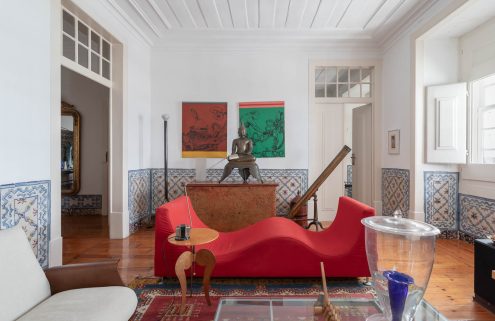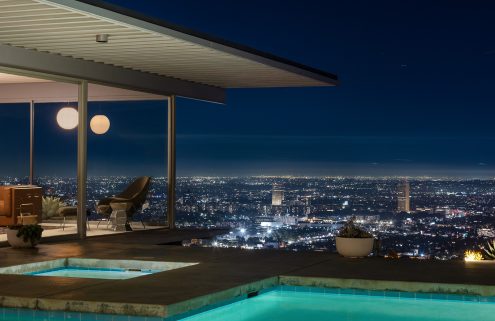In a world where first impressions are everything, lobbies have a critical role. These transient spaces must impress, entice and set the expectations for what lies within – all in a few previous seconds.
But for all the roles that entranceways must do, they often go unsung, especially in Lisbon, where they compete against the brightly coloured facades that enliven the city’s cobbled streets. And while the buildings’ pastel shells are immortalised in the photographs of tourists and residents alike, they give no hint of the jewels waiting inside.

Photography: Ricardo Junqueira

Photography: Ricardo Junqueira

Photography: Ricardo Junqueira

Photography: Ricardo Junqueira

Photography: Ricardo Junqueira
Brazilian photographer Ricardo Junqueira relocated to Lisbon in 2012 and got his start shooting for Airbnb. ‘As tourism bloomed, I had the chance to capture more residential spaces – I photographed around 2000 Lisbon houses’, says Junqueira. ‘The variety I find at people’s homes is so spectacular and impressive – like a [built] “biodiversity manifesto”, so the entryways are like a chapter in this romance.’
He walks us through some of his most spectacular discoveries in the city, including art deco gems and sleek modernist hallways.

How did you first discover these spaces?
Ricardo Junqueira: Totally by chance. When I’m assigned to a job, most times, I don’t have any idea what to expect. Some houses are not particularly interesting while others are marvellous. After I’d photographed a number of houses [for Airbnb], I realised I had some great, unexpected material.
What do you look for in a building or a shot?
I’m interested in diversity, and I am fascinated by the richness of ordinary things. I was born in Brasília, surrounded by great modern architecture, which has influenced how I appreciate architecture. Photographers and architects have something in common – the need to organise things in a limited space. I look at shapes and arrange them in a harmonious way inside the rectangle.

Portugal is famous for its ornate ceramic tiles, the more ‘historic’ of which pay tribute to life in the city via friezes. Where can visitors to the city find the best examples of beautiful tiles?
Tiles were perhaps my first passion in this beautiful city! They are present across Lisbon, but the better neighbourhoods to see them are the older ones such Alfama, Chiado, Madragoa, Belém and Anjos. Once there, there’s no difficulty finding them, especially because Lisbon is a city that invites us to walk. They’re on every street.
How has the pandemic shaped your interests and routines?
The pandemic was a big problem on so many levels: the disease itself, the difficulty moving around, the necessity of social distancing. My primary market is usually tourism-related, and that practically froze last year. However, it also brought some new opportunities: I’ve worked on two books – one about Lisbon’s wine region, the other on the cultural scene of Brasilia, my hometown, in the 1980s.
Every crisis hides opportunities: if we look at what has happened since March last year, we can perceive some good changes like the enormous number of new online courses and all the digital learning platforms created. It also gave us time to stop to think and analyse our way of life, look at our health, and how we’re impacting the planet.

Are there any unsung gems in your series? And do you plan to exhibit the series or collect it in a book?
Yes, the idea is to make a book out of it. And I hope that they’re all unsung gems!
What was the most enjoyable aspect of creating this body of work?
The chance to meet people and visit so many places while learning their histories. I love what I do with all my heart – there aren’t many professions that offer this kind of access.


























